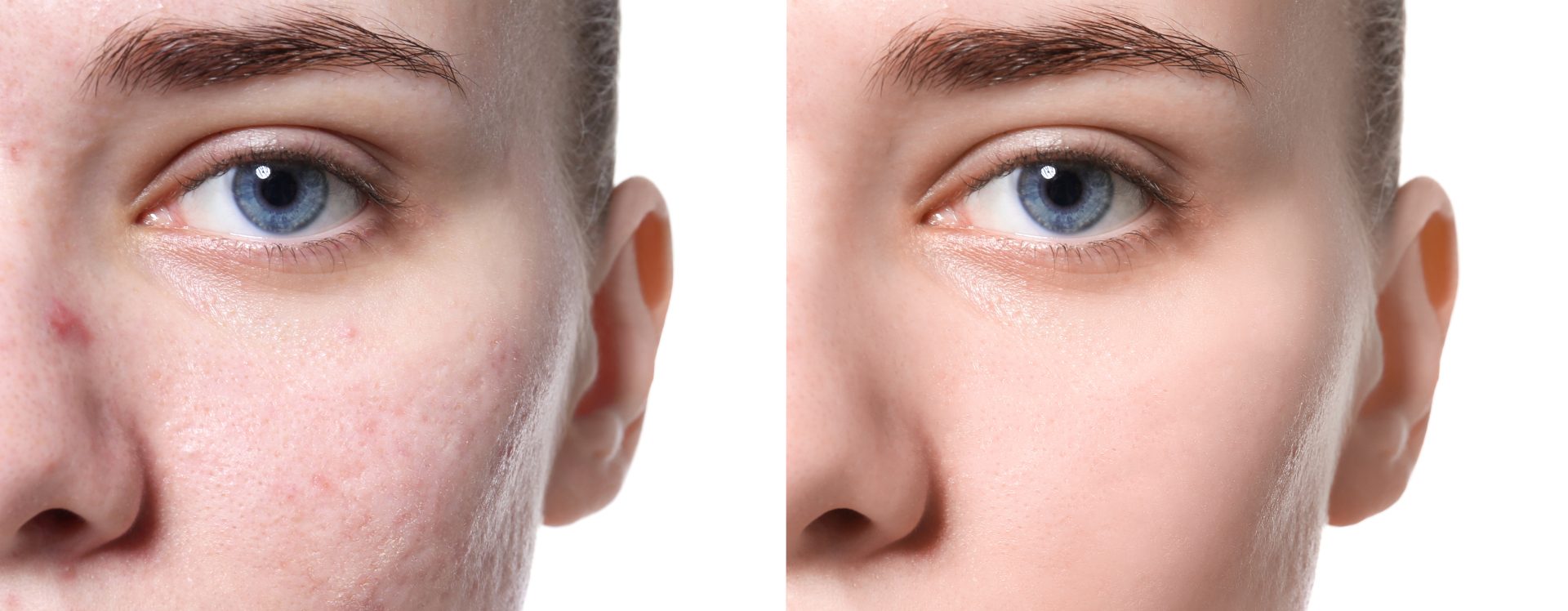Scars – Keloids
Scars are visible marks that are left on the skin after an injury (burn, chemical, mechanical), as the healing mechanisms are activated by the body, in order to maintain the structural and functional integrity of the tissue that has been damaged.
Description
Scars are visible marks that are left on the skin after an injury (burn, chemical, mechanical), as the healing mechanisms are activated by the body, in order to maintain the structural and functional integrity of the tissue that has been damaged. Incomplete healing can result in scars that cause a deformity, leaving a bad aesthetic result. Scars can be divided into hypertrophic, atrophic, keloids, post-operative, post-burn, and shrinking, while acne scars are a special category.
Acne Scars
are caused as a result of abnormal healing of the acneic skin, and are due to both hereditary factors and non-active and untimely Acne Treatment.
Atrophic Scars
They are scars that show atrophic, thin skin at the scar site.
Hypertrophic scars
are deformed scars of great depth that does not go beyond the area of the initial damage, however. Keloids have an obviously bigger size, show deformity, and go beyond the area of the initial damage.
Causes
The development of scars is due to the simultaneous action of the functions of anabolism and catabolism. In order for epidermis to treat the damage, it generates new collagen fibers; a fibrous protein that restores skin consistency. However, depositing collagen on the acne scar takes place in an unstructured, rather than structured, manner. During the healing process, the body generates a lot of collagen, which creates a colliculus on the skin. This increased collagen production is due to increased anabolic activity.
Keloid scars can be caused in some severe acne cases in predisposed individuals. They are extremely hypertrophic acne scars that usually develop on the back, shoulders, and chest. Keloid acne is characterized by big deformed scars.
In many cases, keloids are also formed after a skin damage, such as burn, surgical operation, and vaccination, or after making a tattoo. The most frequent areas where they develop are the back, chest, neck, and also the chin, and earlobes. They most frequently affect dark skins, and exhibit a stronger preference for females and black people. Normally, the causes of the occurrence of keloids are hereditary or are due to endocrine factors.
Treatment
The most usual methods of treating keloids are intralesional (on the keloid), cortisone injections, and cryotherapy with liquid nitrogen. Cryotherapy for relatively small keloids works by causing deep freezing through injection on the keloids that are gradually frozen away locally. For bigger keloids with a quite high volume, there is the special method of freezing the keloid from inside (cryoshape).
Other methods are silicone sheets, pressure with special ligature, closed ligature, laser, intralesional interferon injections, radiation therapy, and surgical excision.




